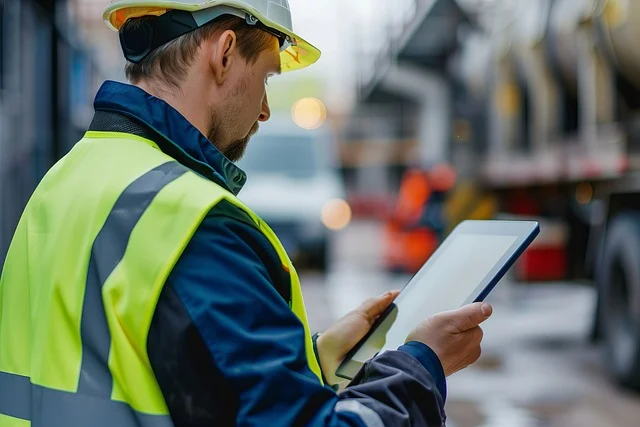In the construction industry, ensuring the safety and well-being of all individuals involved in a project is a top priority. This is where the Construction (Design and Management) Regulations 2015, commonly referred to as CDM 2015, come into play. These regulations are essential for governing how construction projects are planned, managed, and executed in the United Kingdom. For construction companies, understanding and complying with CDM is crucial to mitigating risks, safeguarding workers, and avoiding legal penalties.
At Blackstone Solicitors, we offer legal services across England and Wales, assisting construction companies in understanding their obligations under the CDM Regulations. This article provides an overview of CDM in construction, detailing its purpose, key roles, and the responsibilities that apply to each party involved in a project.
Free Initial Telephone Discussion
For a free initial discussion with a member of our New Enquiries Team, get in touch with us today. We are experienced in dealing with all the legal aspects of construction law, we will review your situation and discuss the options open to you in a clear and approachable manner. Early expert legal assistance can help ensure you are on the best possible footing from the start and also avoid the stress of dealing with these issues on your own. Simply call us on 0345 901 0445 or click here to make a free enquiry and a member of the team will get back to you.
What is CDM 2015?
The Construction (Design and Management) Regulations 2015 are legal guidelines aimed at improving health and safety within the construction industry. They set out how construction projects, from small refurbishments to large-scale developments, must be planned, coordinated, and managed to reduce risks to workers and others on-site.
The CDM Regulations apply to almost all construction projects, including:
- New builds
- Renovations and refurbishments
- Demolition projects
- Maintenance work
- Interior fit-outs
The primary goal of CDM is to ensure that health and safety risks are considered from the earliest stages of a project and managed throughout its lifecycle. By doing so, CDM seeks to prevent accidents, injuries, and illnesses associated with construction activities.
Key Roles in CDM 2015
CDM 2015 assigns specific duties to various parties involved in a construction project. These roles are critical in ensuring compliance and maintaining safety standards. The main duty holders under CDM are:
- Clients
- Principal Designers
- Principal Contractors
- Contractors
- Workers
Let’s examine the responsibilities associated with each role.
- Clients
Under CDM 2015, clients play a central role in ensuring that health and safety are prioritised throughout the project. A client is any individual or organisation that commissions construction work, whether for commercial or domestic purposes.
Client duties include:
- Ensuring that the project is planned, managed, and monitored effectively from the outset.
- Making sure that all duty holders (e.g., designers, contractors) have the necessary skills, knowledge, and experience to fulfil their roles.
- Appointing a Principal Designer and Principal Contractor for projects involving multiple contractors.
- Providing the Principal Designer and Principal Contractor with relevant project information.
- Ensuring that the construction phase does not begin until a construction phase plan is in place.
- Retaining an overview of the health and safety measures being implemented throughout the project.
Clients must ensure that all parties involved in the project understand their obligations under CDM and that health and safety risks are managed proactively.
- Principal Designers
The Principal Designer is appointed by the client to manage and coordinate health and safety during the design phase of the project. This role is typically taken on by an architect, engineer, or another design professional with the appropriate skills and experience.
Principal Designer duties include:
- Planning, managing, and monitoring health and safety during the pre-construction (design) phase.
- Identifying potential risks and designing solutions to minimise or eliminate these risks.
- Ensuring effective communication and coordination between designers and other duty holders.
- Preparing and providing relevant information to the client and Principal Contractor about potential health and safety risks.
- Ensuring that the health and safety file is prepared and maintained throughout the project.
The Principal Designer plays a key role in ensuring that risks are addressed at the earliest stages of a project, preventing issues that could arise during construction.
- Principal Contractors
Once the project reaches the construction phase, the Principal Contractor takes over the responsibility for managing health and safety on-site. The Principal Contractor is appointed by the client for any project that involves more than one contractor.
Principal Contractor duties include:
- Planning, managing, and monitoring the construction phase to ensure health and safety risks are controlled.
- Ensuring that a construction phase plan is in place before work begins.
- Organising site inductions, providing appropriate health and safety training, and ensuring that workers understand the risks and how to mitigate them.
- Coordinating the work of all contractors and ensuring effective communication between the various parties involved.
- Keeping the site safe for workers and any others who may be affected by construction activities, such as visitors or the public.
The Principal Contractor must ensure that the site is adequately managed, with all necessary safety measures in place, and that workers have the correct equipment, training, and resources to work safely.
- Contractors
Contractors are responsible for carrying out construction work on-site. Whether they are subcontractors or directly employed by the client, all contractors have responsibilities under CDM to ensure the safety of their workers and others affected by the project.
Contractor duties include:
- Planning, managing, and monitoring their own work to ensure health and safety risks are controlled.
- Complying with the directions of the Principal Contractor.
- Providing adequate training, information, and supervision to workers under their control.
- Reporting any risks or issues to the Principal Contractor.
Contractors must ensure that they have the skills, knowledge, and experience to fulfil their responsibilities under CDM and work safely on-site.
- Workers
Workers also have duties under CDM 2015, as they are responsible for their own health and safety as well as the safety of others on-site.
Worker duties include:
- Following the health and safety procedures and training provided by their employer or the Principal Contractor.
- Using any protective equipment or safety gear as instructed.
- Reporting any risks or hazards to their supervisor or the Principal Contractor.
- Cooperating with other workers and contractors to ensure safety on-site.
Workers are the last line of defence in ensuring that health and safety standards are maintained during the construction phase. Their active participation and awareness are essential for reducing risks.
Key Documents Required for CDM Compliance
Several key documents are necessary for ensuring compliance with CDM 2015. These documents help to organise and communicate the necessary health and safety information across all stages of the project.
- Pre-Construction Information (PCI)
The Pre-Construction Information is provided by the client and should contain relevant information about the project’s risks, such as hazardous materials, site conditions, or specific design challenges. The Principal Designer uses this information to manage health and safety during the design phase.
- Construction Phase Plan
The Construction Phase Plan is developed by the Principal Contractor before any work begins. It outlines the health and safety arrangements for the construction phase, including details of how risks will be managed, emergency procedures, and arrangements for worker welfare. This document must be in place for all construction projects, regardless of size.
- Health and Safety File
The Health and Safety File is compiled by the Principal Designer and maintained throughout the project. It contains essential information about the completed structure, such as design details, maintenance requirements, and any remaining health and safety risks. The Health and Safety File is handed over to the client at the end of the project and is an important document for future maintenance and management of the building.
The Importance of Compliance with CDM 2015
For construction companies, ensuring compliance with CDM 2015 is not only a legal requirement but also an essential part of maintaining a safe working environment and protecting the well-being of employees, contractors, and the public.
Failure to comply with CDM 2015 can result in serious consequences, including:
- Legal penalties: The Health and Safety Executive (HSE) is responsible for enforcing CDM regulations. Non-compliance can result in fines, legal action, or even imprisonment for severe breaches.
- Project delays: Health and safety issues can lead to stoppages, delays, and increased costs as remedial work is undertaken.
- Reputational damage: Non-compliance with safety regulations can damage a construction company’s reputation, leading to a loss of business and future opportunities.
- Accidents and injuries: The most serious consequence of failing to comply with CDM is the potential for accidents, injuries, or fatalities on-site.
By understanding their obligations under CDM 2015 and working closely with experienced professionals, construction companies can ensure that they manage risks effectively, protect workers, and avoid legal complications.
Conclusion
The Construction (Design and Management) Regulations 2015 are a vital framework for managing health and safety risks in the construction industry. By clearly defining the roles and responsibilities of clients, designers, contractors, and workers, CDM 2015 ensures that safety is integrated into every stage of a project, from initial design to final completion.
By taking proactive steps to understand and implement CDM 2015, construction companies can manage risks effectively, complete projects safely, and ensure long-term success.
How we can help
We have a proven track record of helping clients deal with construction law. We will guide you diligently and ensure all checks are carried out swiftly and efficiently and we firmly believe that with the right solicitors by your side, the entire process will seem more manageable and far less daunting. You can read more about the range of construction law services we offer by clicking here: https://blackstonesolicitorsltd.co.uk/construction-solicitors/
How to Contact Our Construction Solicitors
It is important for you to be well informed about the issues and possible implications of construction law. However, expert legal support is crucial in terms of ensuring a positive outcome to your case.
To speak to our Corporate solicitors today, simply call us on 0345 901 0445, or click here to make a free enquiry. We are well known across the country and can assist wherever you are based. We also have offices based in Cheshire and London.
Disclaimer: This article provides general information only and does not constitute legal advice on any individual circumstances.



